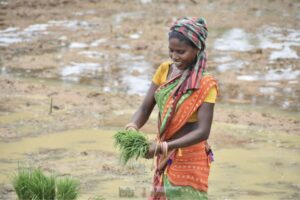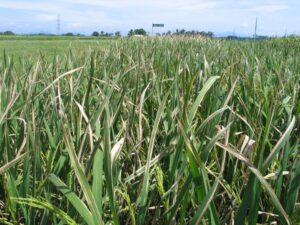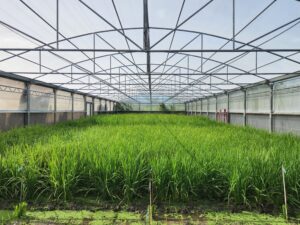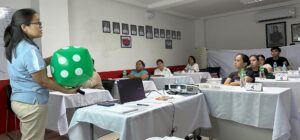WeRise is a seasonal climate forecast-based app designed to maximize rainfed rice production through efficient natural resource management. The app could assist farmers with their crop production decisions by providing crucial weather information such as start and end of the rainy season and distribution of rainfall, optimum sowing time, amount and timing of fertilizer application, and the most suitable variety to plant.
Developed under the Climate Change Adaptation in Rainfed Rice Areas (CCARA) project, WeRise will serve as the springboard for Climate Change Adaptation through Development of a Decision-Support tool to guide Rainfed Rice production (CCADS-RR). CCADS-RR, is the new phase of the IRRI-Japan Collaborative Research Project (IJCRP), which is funded by the Ministry of Agriculture, Forestry and Fisheries of Japan. The CCARA project will end on 30 September.
CCADS-RR invited potential stakeholders including representatives of the Assessment Institute for Agricultural Technology (AIATs) from North Sumatra, West Java, Central Java, East Java, West Nusa Tenggara, and South Sulawesi. They discussed the project concept and details of the work plan such as experiment protocols, data management and sharing, and other areas for possible collaboration.
During DRYNET and WETNET, a series of meeting on the networks for drought-prone lowland and swampland, staff from several AIATs, Indonesian Agroclimate and Hydrology Research Institute, Indonesian Soil Research Institute, and Indonesian Swampland Agriculture Research Institute presented technology innovations in their respective rice ecosystems. The meetings aimed to ensure that the researches being conducted address the local developmental needs by strengthening the network of institutions for technology development and dissemination and putting in place a more effective monitoring and evaluation system. WETNET and DRYNET are supported by CURE, which is funded by the International Fund for Agricultural Development (IFAD), a regional platform for partnerships among institutions from South and Southeast Asia.
“We are proud to be among the major stakeholders of these projects to contribute to moving things forward and ensure that the technologies reach the ground and will be useful for farmers,” said Dr. Ali Jamil, director of the Indonesian Center for Rice Research (ICRR). “As you know, suboptimal lands which include rainfed rice, wet and dry land areas comprise a significant portion of Indonesia’s rice production areas –whose productivity could be enhanced to help us address the problem of decreasing rice production area due to land conversion and consequently help Indonesia achieve self-sufficiency and even surplus, “
The meetings were held at ICRR in Sukamandi, Indonesia on 9-10 September. A total of 42 participants attended the two events organized by IRRI, JIRCAS, and ICRR.
CCADS-RR, headed by Keiichi Hayashi held a separate meeting with officials from the Indonesian Center for Agricultural Land Resources Research and Development (ICALRRD), Indonesian Soil Research Institute (ISRI), and IAHRI in Bogor, Indonesia on 11 September.
Dr. Hayashi, coordinator and soil scientist at IRRI, presented WeRise and discussed ways to align it with Indonesia’s Integrated Cropping Calendar technology, locally known as Katam. Katam is also a climate change adaptation technology that aims to assist farmers with their crop production decisions. WeRise targets rainfed lowland areas while Katam is more suitable for irrigated areas.
Dr. Ir. Dedi Nursyamsi Affendi, M. Agr., director of ICALRRD, expressed his strong support for WeRise noting that the Ministry of Agriculture now places importance on developing rainfed rice areas and other sub-optimal lands.












